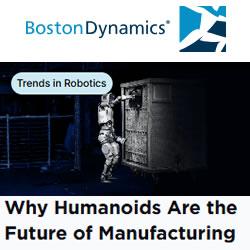Robotics, artificial intelligence fund has tripled the Dow this year
Robert Shiller: Fear of robots is driving the market rally
Amazon Robotics Challenge 2017 won by Australian budget bot
Kaboom! Russian Drone With Thermite Grenade Blows Up a Billion Dollars of Ukranian Ammo
Amazon Enlists Researchers to Build Box-Packing Robots
Open Board for 3D Gesture Control, Motion Capturing, Tracking and Robotics
Teaching Drones How To Crash Safely
As California's labor shortage grows, farmers race to replace workers with robots
Robotics experts dismiss Musk's call for AI regulation
Elon Musk: 'Robots will be able to do everything better than us'
Professor Michael Gennert Looks Back at a First Decade of Robotics Engineering Program
The Drone Racing League (DRL) Builds The Fastest Racing Drone
Is robotics the key to repairing societal infrastructure?
How a One-Man Team from California Won NASA's Space Robotics Challenge
Spider robots on the move for additive manufacturing
Records 886 to 900 of 1669
First | Previous | Next | Last
Featured Product

Boston Dynamics Webinar - Why Humanoids Are the Future of Manufacturing
Robotics and Automation - Featured Company

